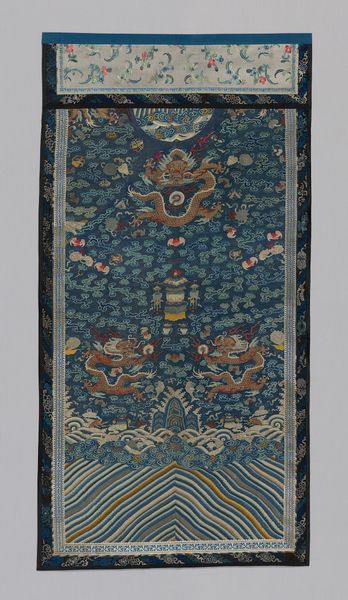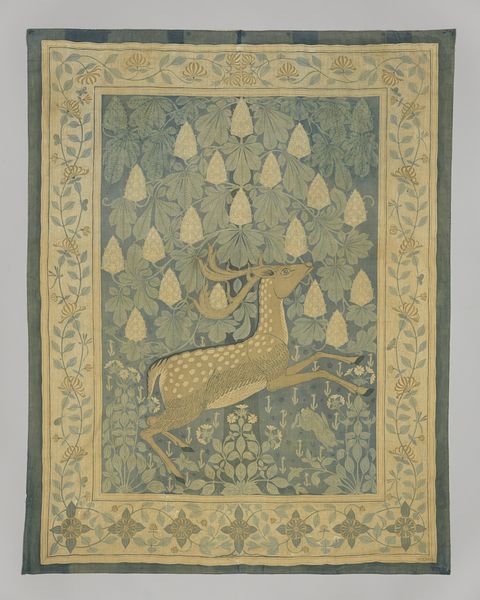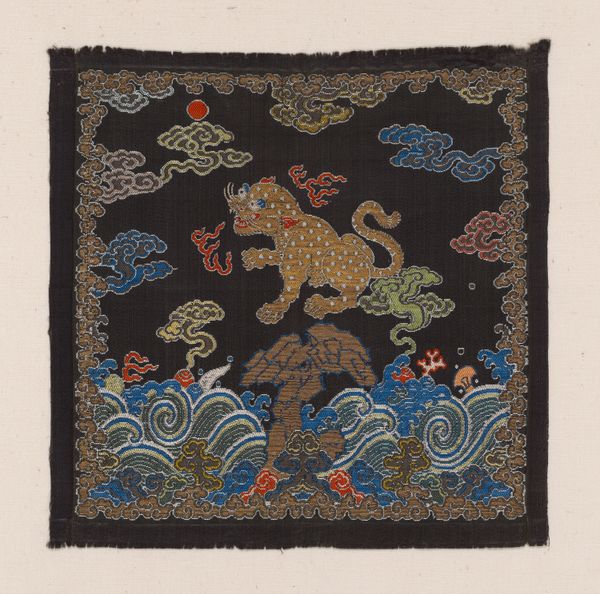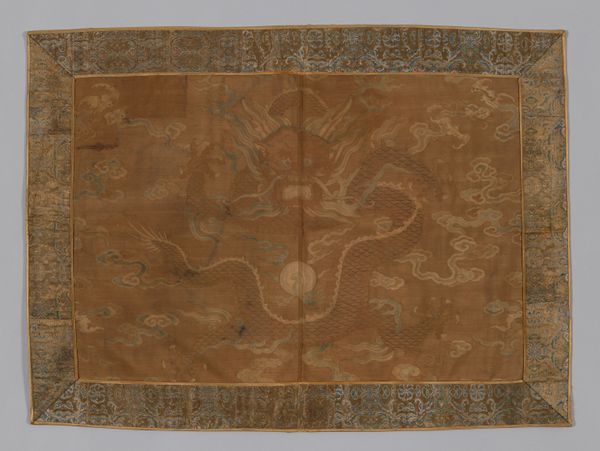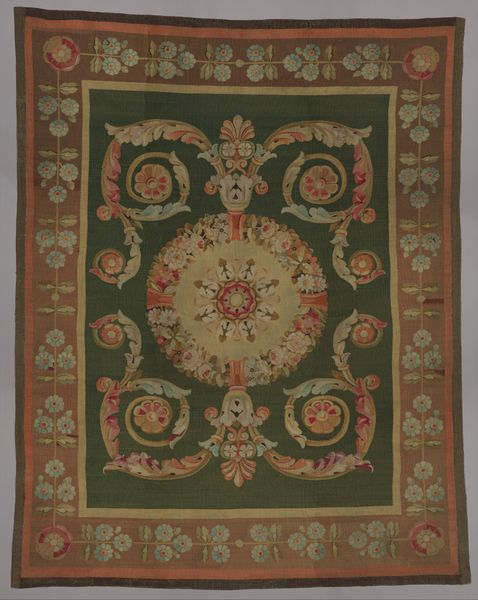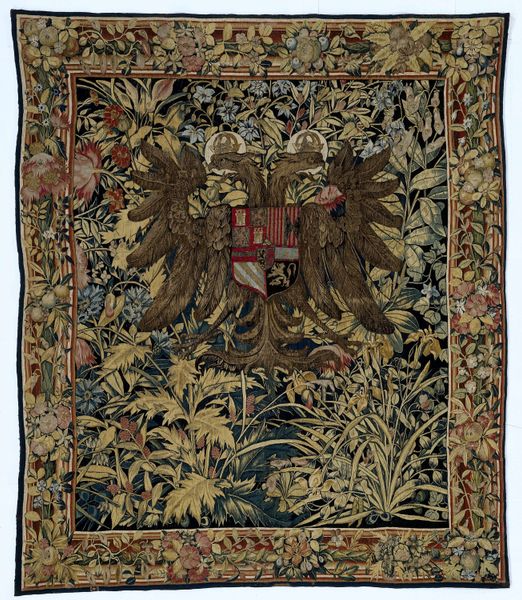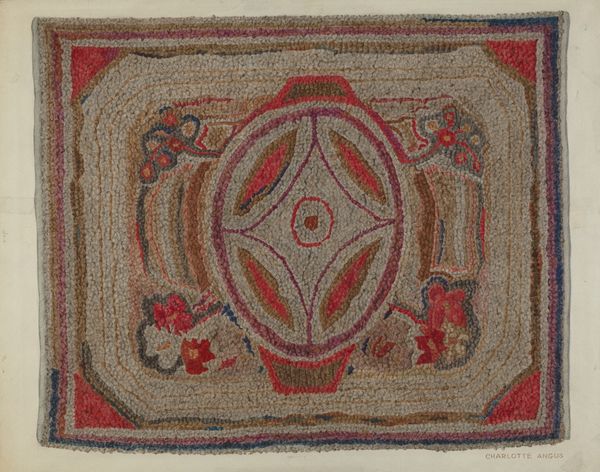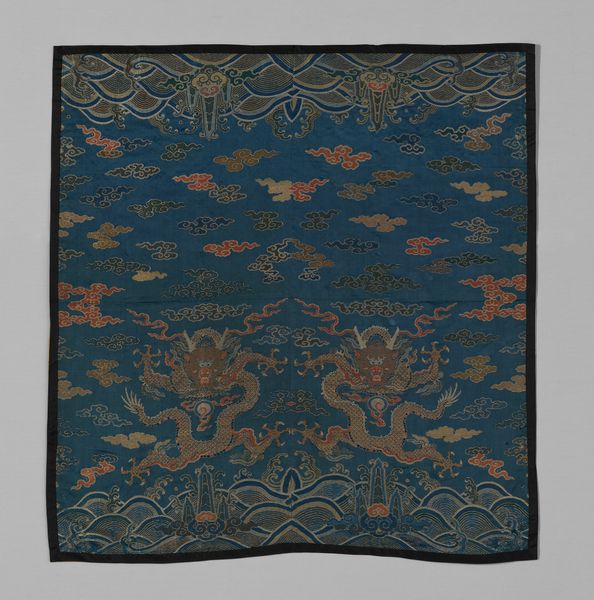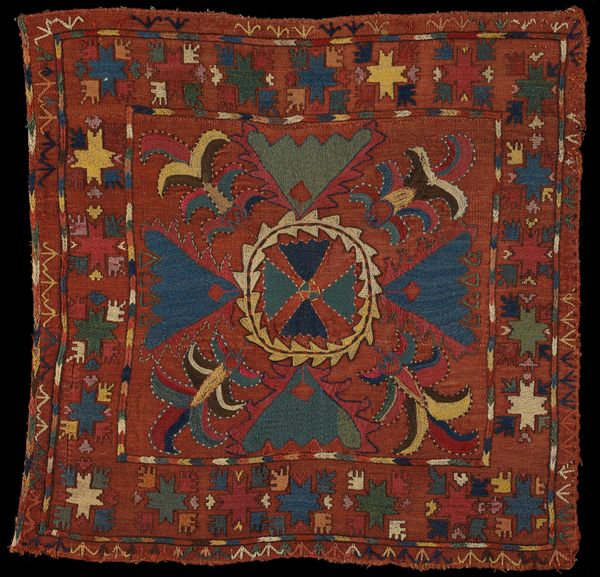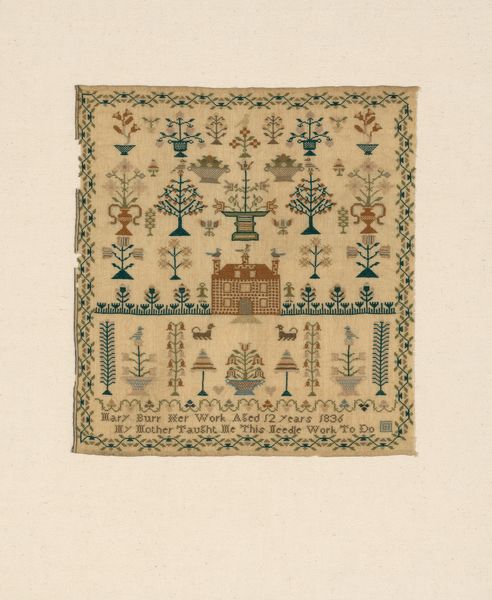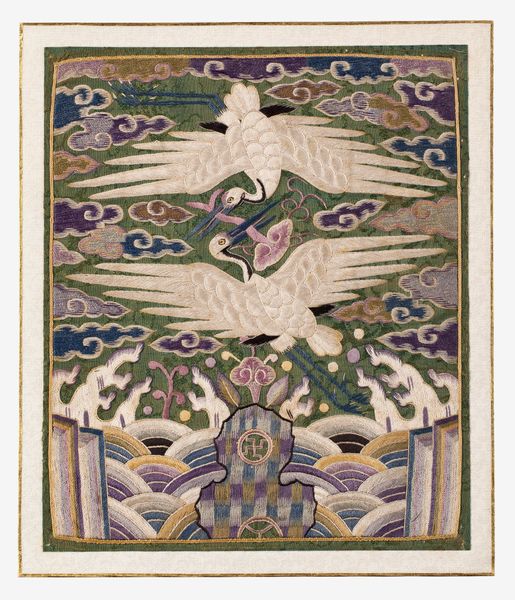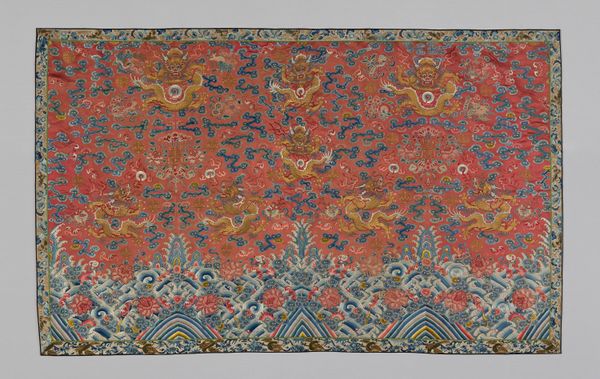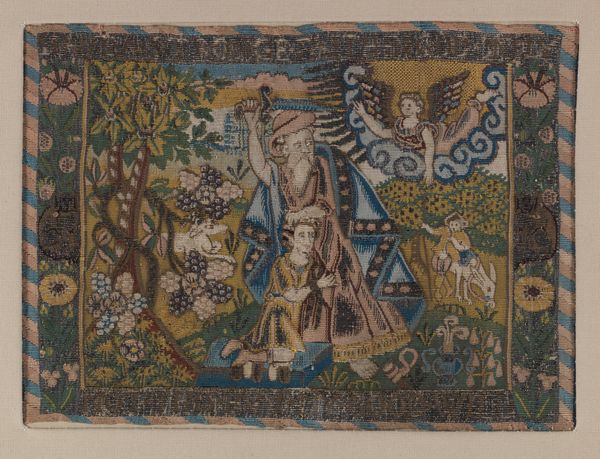
weaving, textile
#
asian-art
#
weaving
#
textile
#
geometric
#
orientalism
#
costume
#
china
#
decorative-art
Dimensions: 31.2 × 31.8 cm (12 1/4 × 12 1/2 in.)
Copyright: Public Domain
Curator: What a meticulously crafted piece! This is a Manchu court badge, likely made sometime between 1880 and 1911. It's a textile work, a weaving to be exact, currently residing here at the Art Institute of Chicago. Editor: Immediately, I’m struck by its regal aura. The vibrant blues, that stately bird, all within such a structured geometric design, it whispers of status, power, and… well, controlled freedom. Curator: Precisely! Badges like this were worn on the robes of officials in the Qing dynasty, signifying rank. Each animal, each color had symbolic weight. The peacock here, for instance, indicates a specific civil rank. This was visual shorthand for a man's place in the complex hierarchy. Editor: Which also makes it a potent symbol of systemic inequality. It’s easy to get lost in the decorative allure, but let’s not forget the power dynamics embedded in every thread. The very act of designating status so visibly... what messages did this send? And to whom? Curator: It's beautiful and insidious, right? The almost jewel-like quality of the weaving softens the harsh reality of imperial China. And the composition, it's all so deliberate. Look at how the waves at the bottom give way to the sky filled with auspicious symbols—it's a tiny universe of status. Editor: That visual harmony almost domesticates the ruling structure, creating an illusion of balance where imbalance was the very point. But thinking about it, who had the skills and time to create this level of detailed work? The artistry itself probably represents exploitation of some kind. Curator: Most likely! Yet I am still drawn to the sheer craftsmanship. Imagine the skill and patience needed to weave those intricate patterns, stitch by stitch! What did the maker think of their work? Were they proud of their skills or resentful of their servitude? We will never know. Editor: Precisely, and these are crucial questions. What kind of legacy do we want these emblems to represent, today? Is it possible for such objects to ever really escape their political context? Or do we trap ourselves repeating cycles of elitism? Curator: Hmmm, so much to contemplate indeed! Let's hold both the awe and the questioning, I suppose, allowing this intricate weaving to challenge our thinking even as we appreciate its unique visual language. Editor: Well said! I agree – and who knows? Perhaps by holding space for complex tensions, we leave a healthier path open for other conversations.
Comments
No comments
Be the first to comment and join the conversation on the ultimate creative platform.
